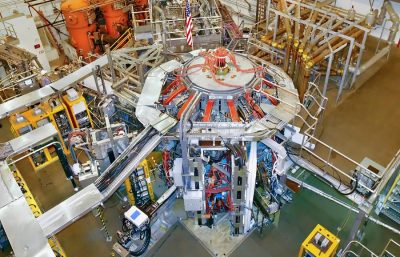
Last Friday, 20 May 2016, was a historic day at the Princeton Plasma Physics Laboratory (PPPL). It was a day that the $94-million upgrade to National Spherical Torus Experiment (NSTX-U), which took almost four years to build, was officially launched by the U.S. Department of Energy (DOE) Secretary Ernest Moniz.
Funded by the DOE Office of Science, NSTX-U addresses how to create fusion, the process that powers the Sun, on Earth, in a device based on the spherical tokamak concept.




